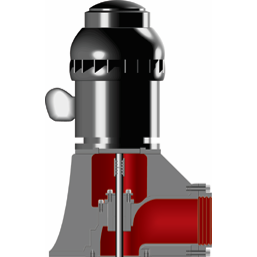
Let’s imagine you're designing a new well pump installation for a municipal water system. You have meticulously modeled the system, generated a divinely accurate system curve, and with the help of your friendly local pump guy, you have chosen the perfect pump. Now what?
The goal of a successful pump specification is to encourage maximum competition while ensuring maximum quality. It is a delicate balance that is difficult to achieve. As a pump distributor of multiple brands I have experienced what works, and what doesn’t. I have seen pumps specified so exclusively that all competition was eliminated, allowing the specified manufacturer to charge a king's ransom for a run of the mill pump. I have also seen pumps specified so generically that there was no hope of the owner receiving the caliber of pump they desired. One thing I have learned in the process is that no one manufacturer has a monopoly on building quality pumps. When your specification allows all qualified manufacturers to put their best foot forward the result is highly competitive bidding of high quality products. Listed below are the parameters that I believe result in the best competitive bids.
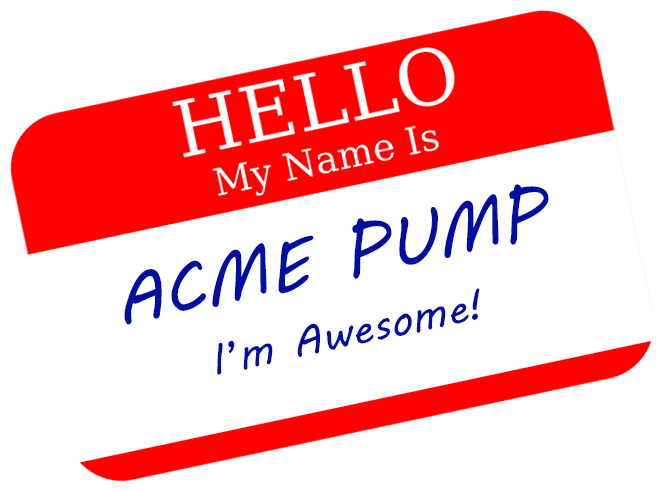
Name Names
Many times specifiers are reluctant to identify the make and model of a pump they have found suitable for the application. I think this is a mistake. Naming accomplishes three things:
- The named manufacturer is the lead horse and has a target on their back, they will price their bid competitively in an attempt to defend their position.
- Naming a pump takes some of the mystery out of the specifications, potential competitors can recognize what you are asking for and determine if they are able to provide an equivalent grade of pump.
- Qualified competitors will price aggressively in an attempt to take one away from the competition.
It has been my experience that when no manufacturer is named, all manufacturers are indifferent to the spec. They get excited when they see their pump specified and get creative when they see their competitor specified. You need them to be passionate about winning.

Identify 3 Design Points With Efficiencies
Why do you need 3 design points? To ensure that the pump is a good fit for your system. The design points should be identified as follows:
- Condition of Service: This is the design flow, head, and efficiency you expect the pump to encounter in the system.
- 80% Flow: This is the flow, head, and efficiency at 80% of the design flow rate.
- 110% Flow: This is the flow, head, and efficiency at 110% of the design flow rate.
Requiring all 3 of these conditions to be within 70%-120% of the pump best efficiency point (BEP) will ensure that the pump is operating optimally and will play well with the system curve.

Factory Certified Performance Tests
While startup testing is a good way to make sure that everything is functioning correctly, it is virtually impossible to prove that a pump either does or does not meet specified performance requirements in the field. Field instrumentation (or lack of instrumentation) always leaves room for doubt about the performance or efficiency of the pump. Requiring a certified performance test performed under laboratory conditions by the manufacturer removes any doubt that the customer is getting what they paid for. Yes, these tests are expensive, but they cost a fraction what everyone involved could spend trying to prove the pump is/isn’t performing.
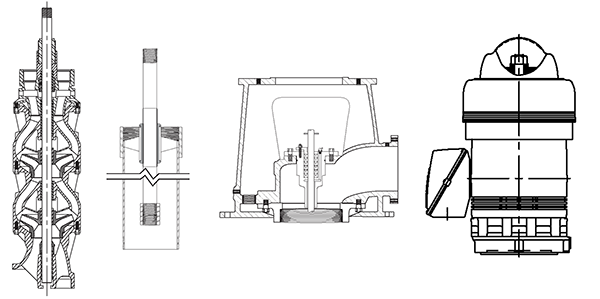
Unit Responsibility
You wouldn’t allow a pump to be simultaneously installed by four different contractors, so why would you allow the pump to be supplied by four different manufacturers? Unitary responsibility is intended to eliminate finger pointing in the event of a failure. By requiring the pump bowl assembly, column, shaft, discharge head, and motor to be provided by one manufacturer you eliminate the possibility of having multiple manufacturers all blaming the others for a failure. It narrows the possible causes of a problem down to either an installation issue or a manufacturing defect. Either way, there is only one party responsible.

Quality Assurance
Third party certifications such as NSF 61 and ISO 9000 ensure that you are getting a top quality, factory built pump. Did you know that pump manufacturers sell raw castings and components to distributors who then use those parts to build pumps in their shop? This practice is considered acceptable in agriculture applications. This allows the distributor to quickly deliver a large variety of pump assemblies from a minimal inventory investment. The pumps can be assembled quickly as needed avoiding the long lead times commonly encountered with factory built pumps. However, these pumps will not have factory certified performance tests, third party certifications, or unit responsibility.
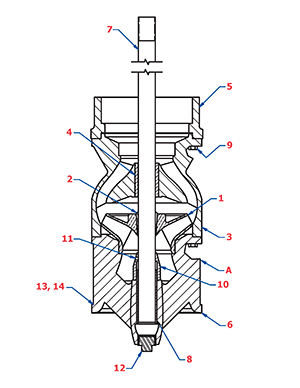
Material Specifications
Specifying materials can help you set a standard of quality for a proposed pump but don’t go overboard. Manufacturers do not all use the same materials for every part of a pump. If you have specified an NSF 61 bowl assembly you do not need to dictate the materials used for each component. One manufacturer may have used stainless steel impellers on their NSF offering while another used low-lead bronze. If you specify stainless steel the manufacturer using bronze will not be able to meet the spec since their NSF certification is based on the use of bronze. It is fine to require things like stainless steel line shaft, specific column pipe wall thickness, or NSF coatings as these things will not affect any manufacturer's certifications. I recommend limiting materials specifications to the following:
- bowl assembly: certifications and coatings (i.e. NSF 61 certified, NSF 61 epoxy coated)
- column pipe: specify type, size, schedule, and coatings (i.e. ASTM A53 grade B steel pipe, standard wall, 10”, threaded and coupled, NSF 61 epoxy coated interior and exterior)
- lineshaft: material, diameter, and construction (i.e. 1-15/16” 416SS threaded)
- discharge head: size, connection, construction, coatings (i.e. 10” x 10”, Class 150 flanged, fabricated steel, NSF 61 epoxy coated interior and exterior)
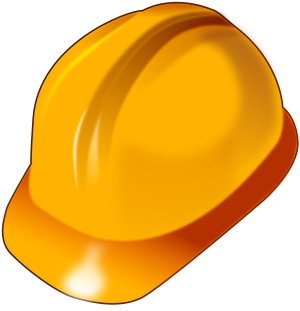
Installation
When a problem with a new line shaft turbine pump occurs it is more often than not an installation issue. Most down hole installation issues can be avoided by taking a few simple measurements as each section of column is being installed:
- require measurements of shaft runout before each piece of shaft is installed
- require measurements of each length of pipe and shaft
- require measurement of shaft stickup after each section of column is assembled
Obviously it is not enough to take the measurements, you need to include a requirement to correct measurements that are out of tolerance. These are steps that most installers would perform without requiring them in the spec, but documenting these measurements provides evidence that the installation was performed correctly.

Consistency is Key
All of the things covered here are simple, and we have all seen some or all of these things required in specifications before. The key to consistent results is to require all of these things each time we specify a vertical turbine pump. You can download a spec-aid checklist below to help you do just that.

VTP specification checklist












